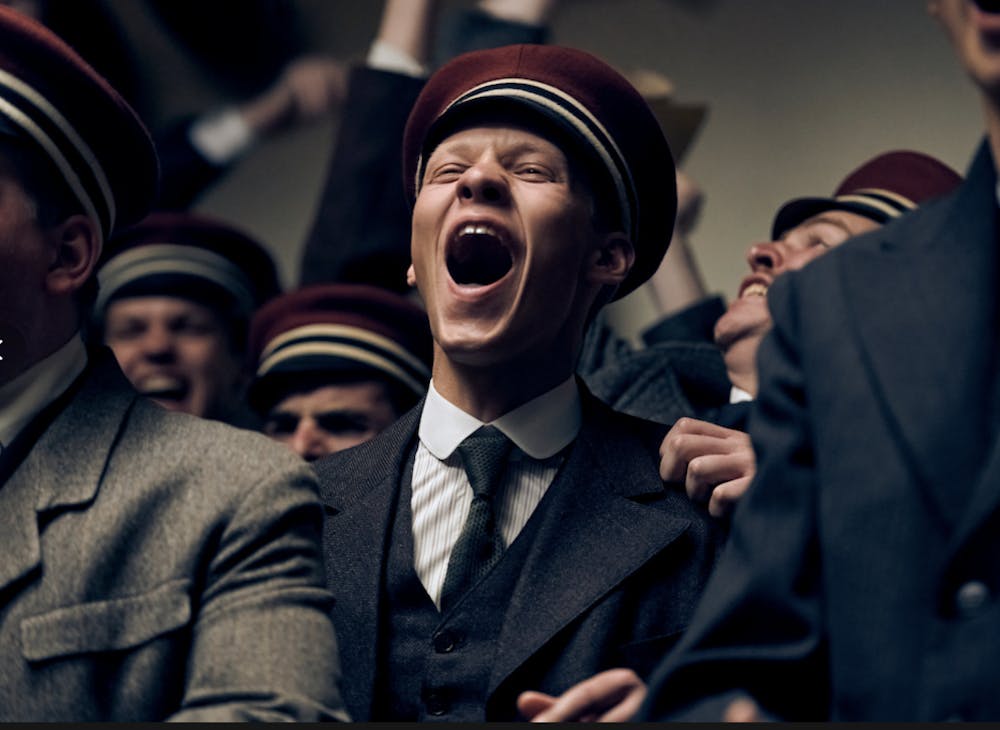It is difficult to do justice to the horrors of a conflict that killed close to 17 million people, especially through a medium primarily used to entertain. But Edward Berger’s German-language war epic “All Quiet on the Western Front” makes an admirable effort, offering a harrowing portrayal of one of history’s most devastating conflicts in a way that leaves the viewer in awe of the sheer brutality of war.
The film draws from German World War I veteran Erich Maria Remarque’s work of the same name, which was first published as a serial in a German magazine in late 1928 and released as a novel the following year. The novel sold 1.5 million copies in 1929 and was made into an Academy Award-winning movie in 1930, but Remarque’s antiwar message was condemned by the rising Nazi government in the early 1930s and his book was burned as “degenerate” once Hitler rose to power in 1933. Now, close to a century later, Berger has tried to bring Remarque’s antiwar message into the modern world.
The film opens with the story of Paul Bäumer (Felix Kammerer), a German teenager who, along with his friends, joins the German army in 1917 expecting adventure and glory. They leave their clean, idyllic hometown for the well-trodden and bombed-out fields of France. The film then jumps forward to November 1918, when Paul is an experienced soldier and the war nears its close. The rest of “All Quiet on the Western Front” is dedicated largely to the ensuing stories of Paul, an older soldier named Stanislaus “Kat” Katzcinsky (Albrecht Schuch) and Paul’s remaining childhood friends as they do their best to survive the war’s final days, all as a small group of German negotiators work behind the scenes to decide the fates of thousands.
But the plot is merely a vehicle for the film’s broader antiwar message. While it follows a particular set of soldiers, the experiences conveyed in “All Quiet on the Western Front” could be the experiences of any other soldier fighting in the trenches, regardless of what side they fought on. In other war movies, viewers tend to encounter heroic American characters who fight against nameless enemies who speak unfamiliar languages. But “All Quiet on the Western Front” tells the story of the German soldiers who Hollywood so often treats as this anonymous horde. The film strips away any sort of nationalist veneer to emphasize that all soldiers, no matter their allegiance, are victims of circumstance just trying to survive their nightmarish realities. When Paul wrestles in the mud with a French soldier before trying in vain to comfort the man in his dying moments, the mere idea of fighting in the name of a nation seems horrifying. As the film so forcefully demonstrates, the reality of war comes down to human beings needlessly murdering each other with the result being anything but glorious.
The fact that the film was made in German further forces American viewers to shed their preconceived notions of good and evil in a war film. In a reversal of American war movies, the protagonists are the ones speaking the often-vilified German, while French and English are the languages of the “enemy.” The English dub functions as a serviceable substitute for subtitles, but watching the film in its original German with English subtitles most effectively forces viewers to reckon with the fact that the film is telling the deeply human stories of those who, in the American imagination, often function as the villain.
Central to the film’s appeal is its subversion of tropes traditionally encountered in American war films. Nothing about “All Quiet on the Western Front” romanticizes warfare — the film is a nauseating slog through the mud. The film’s aesthetic is dreary — everything is damp, grimy, dirty and gray. Berger effectively juxtaposes his portrayal of the armistice negotiations, which are conducted in luxurious train cars by men in immaculate suits who eat high-class meals, against the squalor of the trenches. Paul and his friends go off to war expecting adventure and excitement, but Berger makes clear that every moment on the front line is miserable even before the bombs start falling and the bullets start flying.
The film’s ending is unnecessarily cruel and hopelessly grim, but that is by no means bad. It takes creative liberties with history but is effective because the film’s message and bleak tone supersede the details of the plot — it uses hyperbole to convey the sheer horror of war. Likewise, the film’s main “villain,” a general who cares more about reputation and glory than about the lives of the men under his command, is almost comically evil. Yet he stands in for something real, a caricature of every general and politician whose pursuit of political power ignores the human cost of their actions. The film emphasizes the devastation of war in nauseating detail, an approach that is effective given that demonstrating the horrors of war is central to the film’s project.
“All Quiet on the Western Front” is brutally honest in its raw, unflinching portrayal of war. As a gripping and harrowing war epic that forces the viewer to grapple with the human toll of war from a non-American perspective, the film is a must-watch for any globally-conscious viewer.

Peter Swope was the senior editor of digital engagement for The Brown Daily Herald's 133rd Editorial Board. He previously served as a Sports section editor and has also written stories for University News. Peter is a senior from New Jersey studying history.





